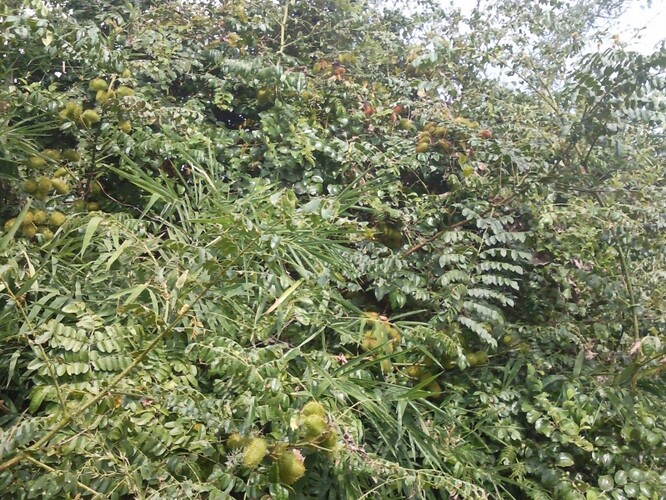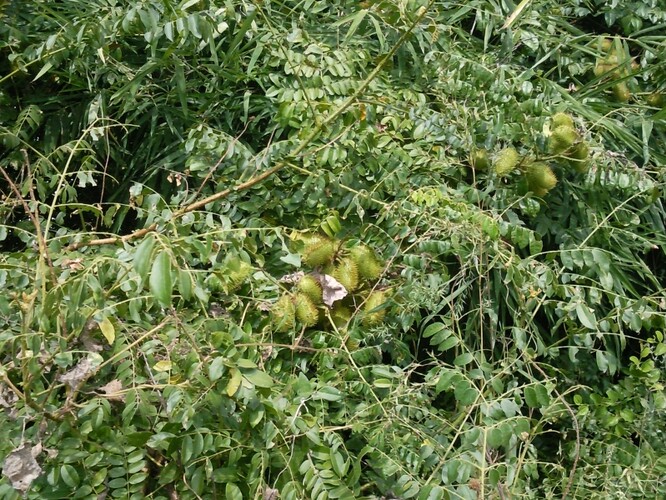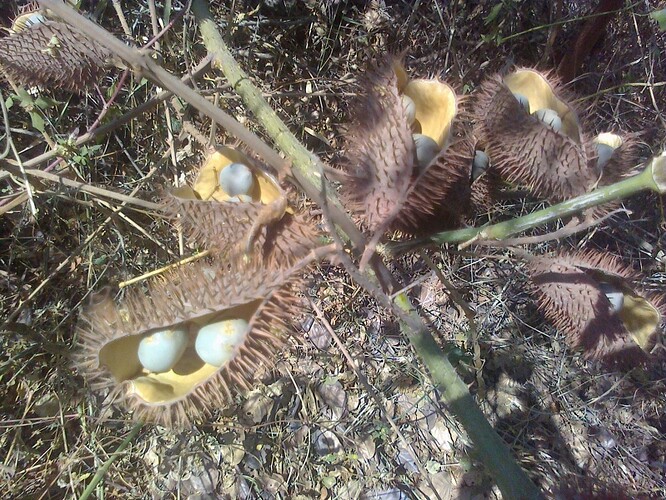Septa is the plural of septum. Septum is a dividing partition between two compartments.
In this instant case of cattle proof trench, the suggestion is to form septa at every 100 meters to prevent the continuous flow of water with in the trench and thus avoiding formation of a drain.
Leaving septa of 6 inch width with in the trench without digging the 6 inch portion is recommended because the cattle find it difficult to cross over such small septa.
Siva Sankara Reddy.
Thank you.
Will a 6" septum stand the test of time and water pressure/erosion? Would it be preferable to have wider septa; (here I go using this new word now!) say, until a depth of 3-4’ in a trench that is 6’ deep?
I too have similar doubts, if the water is full it might not stand the pressure. As Reddy garu explained earlier, if this is wider it would not serve the purpose as people can cross and even the cattle will cross easily.
How about a shahbad or rcc slab?
No problem. 6" septum will serve the purpose as the ground in the subsoil is hard enough to take the pressure of water. What is to be appreciated here is that water in the trench is not running but stagant and it percolates into the soil in no time. This is the practice generally followed for most of the forest plantations where cattle proof trenches are dug along the periphery to prevent entry of cattle into the plantations.
Another important point to be kept in mind is that the walls of the trenches collapse with passage of time because of which the cattle to cross the trench easily. Therefore these need to be maintained periodically by trimming the walls depending on the need.
Siva Sankara Reddy.
Hi?
This is the season to harvest Caesalpinia crista seeds which are readily naturally in the elderly grown plants which produced decent number of seeds. Have you collected? Can any one come back with results.
Find the below photo in which seeds are ready to pick from the plant. Be careful of thorns while collecting the same.
I have collected the seeds at Somanahally, Kanakapura road, Bangalore in last week. Still about 5 kgs seeds are available their, no local one knows about their uses, can any one try in your area?
Hi FNians,
I need to plant live fence on my farm … anyone know where I can source the same in Bangalore or Hosur region?
Jatropha, giri-pusha, sagargota … Also where can I source casuarina saplings? I need about 50 of them.
I checked several places, farmers, etc … but no luck. Any help will be highly appreciated!
Thanks!
Manjunath
Pl google Aranya Bhavan (Karnataka Forest Dept HQ) at malleshwaram Bangalore. Definitely they will be able to help.However Krishnendra nursery at Siddapura Lalbagh also may be able to help you out.
Contact Suresh agro forestry in Banglore. They also have seeds of various live fencing trees. While Krishendra nursery has saplings.
Please send me the information about Heena and how to grow it along the border. Thank you.
This is called Vaavili chettu telugu… highly medicinal plant. Very good for treating respiratory disorders.
Keep it, try find any Ayurveda herbal store, they use it in medicine preparation.
I bought gajaka seeds from Suresh Forestry. Need to keep in boiling water for 10 mins and allow it to cool for 12hrs. FINAL outcome for me is pathetic .Wd hav planted in last 4 years around 300 seeds Have around 30 grown trees. I intend giving it to a nursery hoping he has better techniques. But Kiluvai grows extremely well
Gajukka is the best and even rats cannot enter.If you go near either your hair on hand or shirt or both get entangled and retrieving is tough
Sir, where do you get Kiluvai seeds or stumps? In our area, Vandavasi, we don’t find these. Please advise.
Thanks in advance.
Useful information.
Pl forward contact no. for Kiluvai seed or nursery whatever gives best result.
My name is Chandrakumar contact no 9019122334.Thanks in advance
Creating a live fence using Stylosanthes hamata (commonly known as “Stylo Hemata” or “Townsville Stylo”) for farm land can be an effective way to establish a natural and sustainable barrier. Stylo Hemata is a leguminous plant known for its nitrogen-fixing properties, which can improve soil fertility and provide additional benefits to the farm. Here’s a step-by-step process for establishing a live fence with Stylo Hemata.
Propagation of Stylo Hemata:
You have two main options for propagating Stylo Hemata:
a. Seeds: Obtain Stylo Hemata seeds from a reliable source. Soak the seeds in water for a few hours before sowing to enhance germination. Plant the seeds at a depth of about 1 cm (0.4 inches) and space them about 10-15 cm (4-6 inches) apart in rows.
b. Cuttings: Take healthy cuttings from mature Stylo Hemata plants. Cuttings should be about 15-20 cm (6-8 inches) long. Remove leaves from the lower half of the cutting and plant it directly in the prepared soil, burying about half of the cutting.
Spacing:
Space the Stylo Hemata plants along the boundary where you want the live fence. The exact spacing will depend on how dense you want the fence to be, but a spacing of 30-60 cm (12-24 inches) between plants is a common guideline.
Remember that the success of your live fence will depend on factors such as local climate, soil conditions, and adequate care. Additionally, it’s a good idea to check with local agricultural authorities or experts to ensure that Stylo Hemata is well-suited to your specific area and farming practices.
Mr Hegde avoid Lantana it’s a bothersome weed


